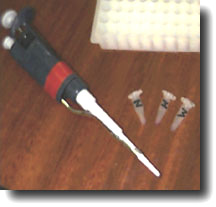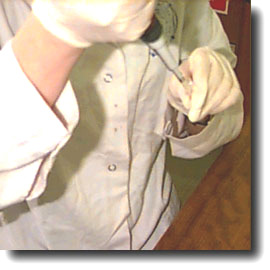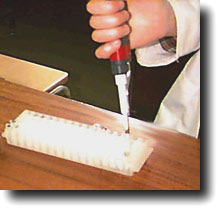
- 9µl Sterile distilled water
- 2µl 10X PCR Buffer
- 2µl Oligonucleotide primer pair
- 5µl of the appropriate DNA (water for negative control)
- 2µl Taq polymerase


The polymerase chain reaction (PCR) is one of the newest techniques available and potentially offers tremendous advantages for the diagnosis of infectious diseases.
Human papillomavirus infections cannot be easily diagnosed by the conventional methods used in the virus diagnostic laboratory, but PCR can be used for the detection of these viruses.
 |
|
| Carefully, without cross-contaminating the reagents, to each tube in this order add: | |
|
 |
 |
Overlay each reaction mixture with 50µl of mineral oil. |